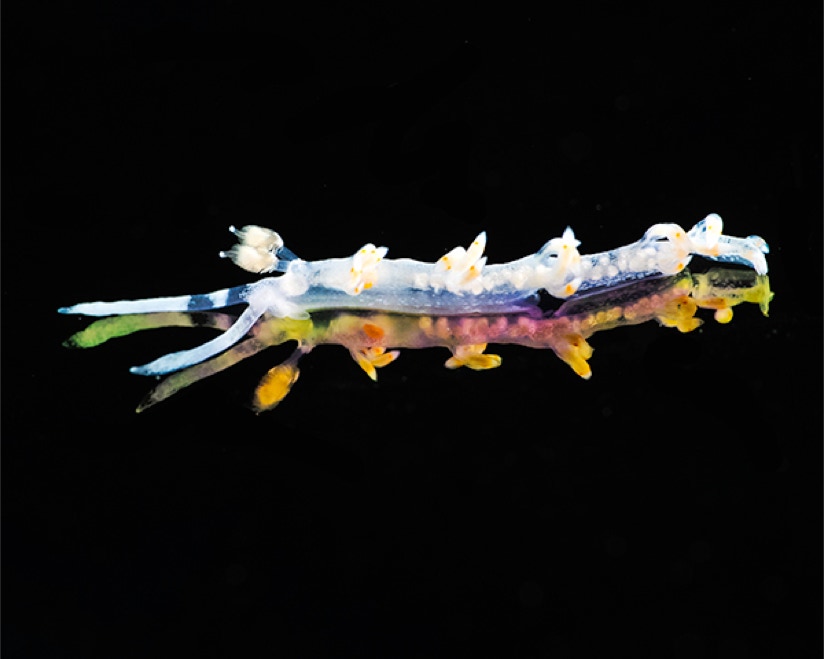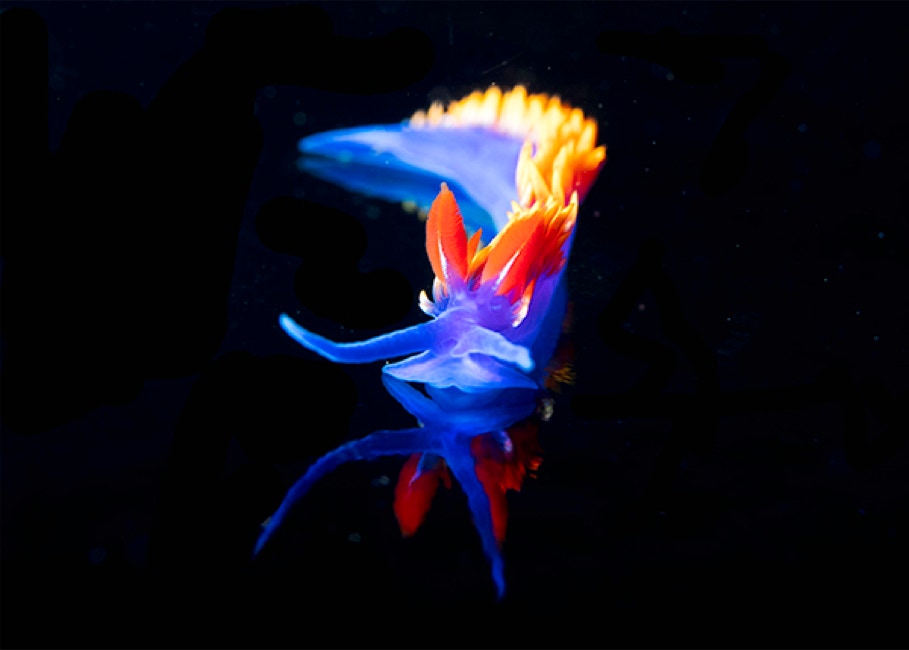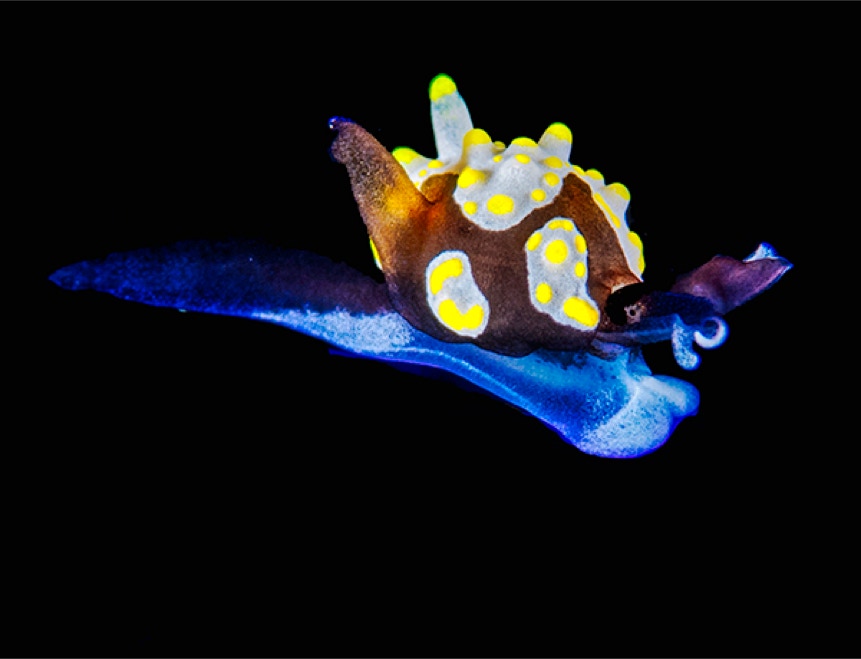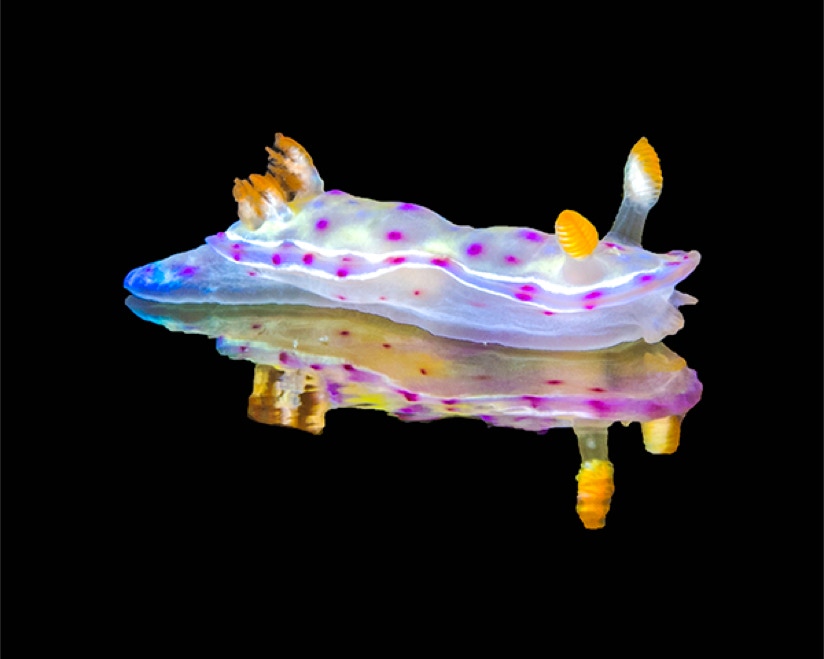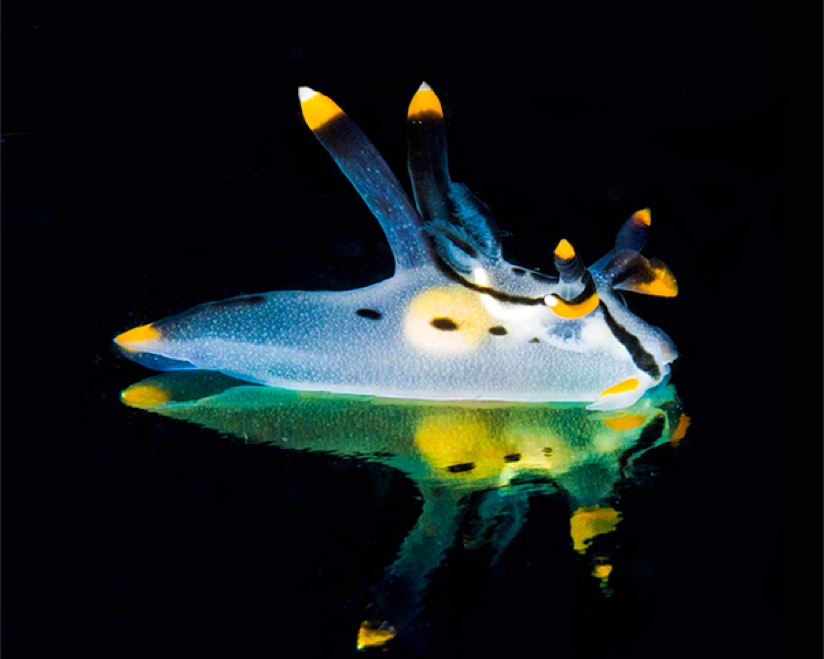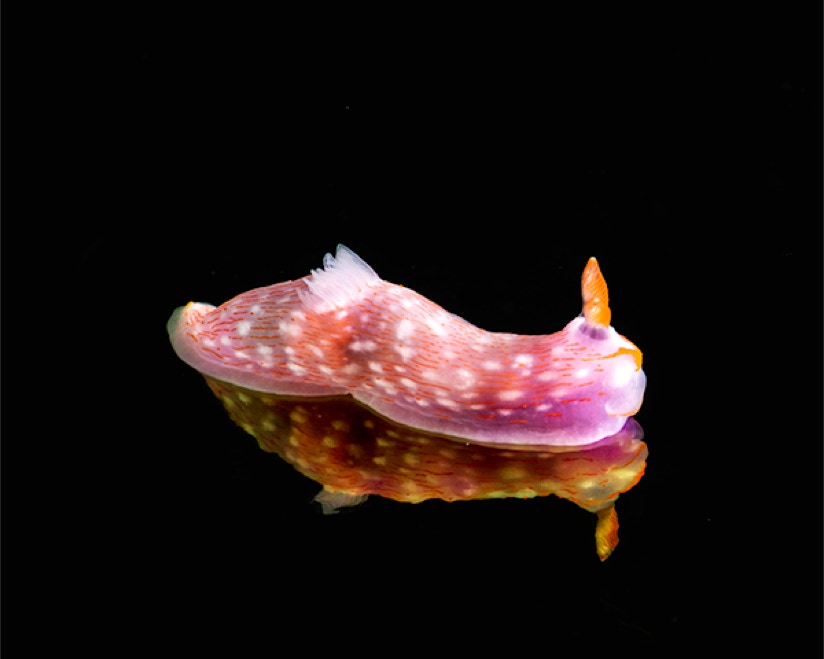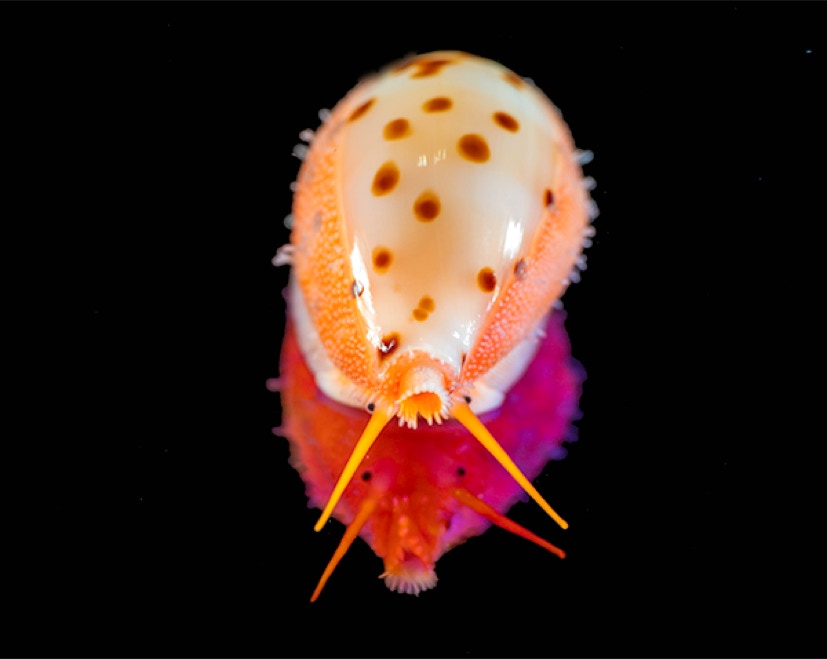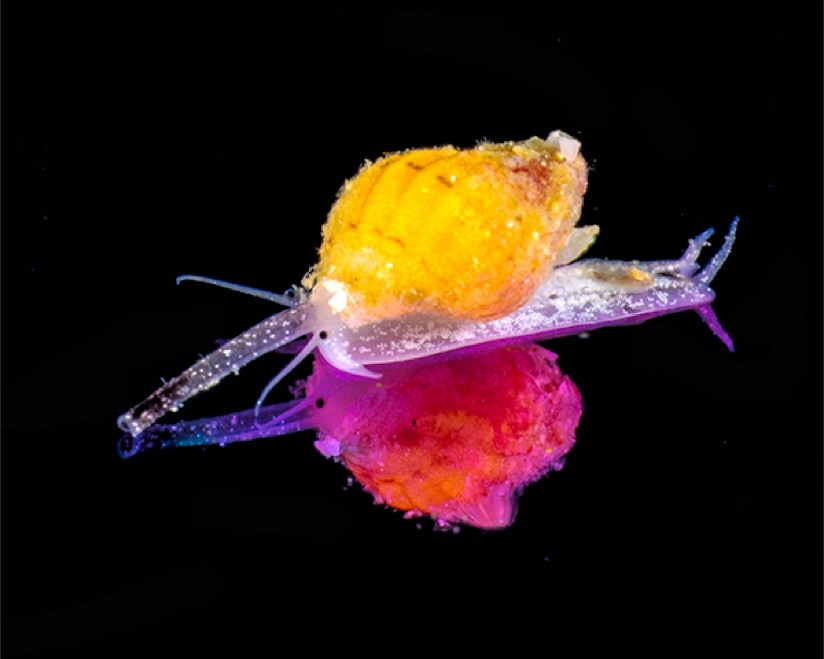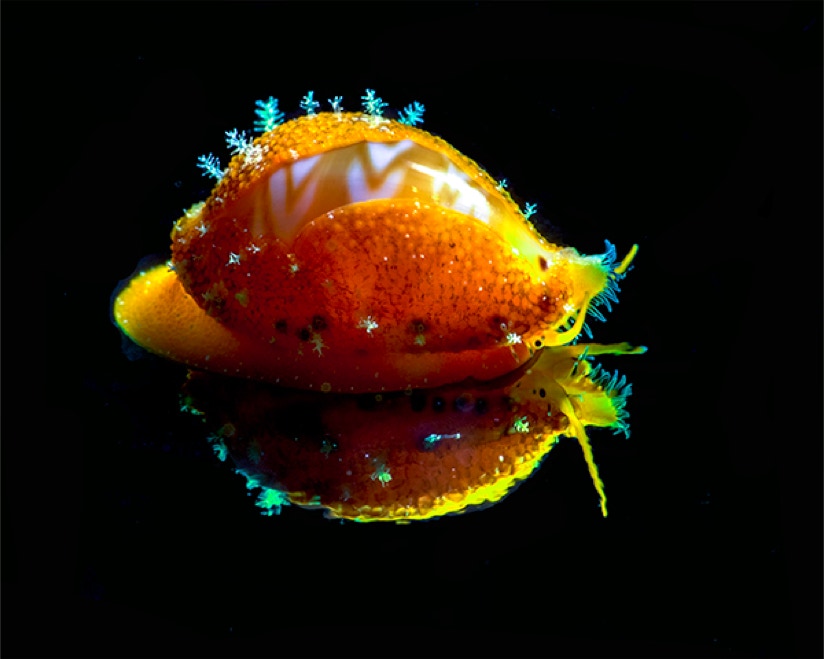Nudibranchs are the fashion models of the underwater world. There are approximately 2500 known species of nudibranchs and many of them are quite spectacular looking. Nudibranch means “naked gills” in a combination name from both Latin and Greek. Biologically, they are a family of opisthobranchs (sea slugs) in the phylum of molluscs.
There are spectacular looking nudibranchs in almost every part of the world’s oceans and I decided to treat them the way that fashion photographers treat models, but putting them in a controlled photographical space. To do this I built a small (150 x 150 mm) stage that I take underwater. The stage is made from a piece of dichroic glass that reflects light in unusual and unpredictable ways depending on the direction and intensity of the incident light.
Of course I am not the first to try to put Nudibranchs on a stage; David Doubilet published a spectacular series of nudibranchs in Nat Geo back in 2008 which were clear inspiration for my efforts.
One issue on shooting nudibranchs needs to be addressed and that is the fact that to shoot these creatures this way means you have to move them. When Doubilet shot his photos for Nat Geo there were several commentators on line that said what he was doing was somehow terrible. Many people think that touching things underwater is a major sin but many of these folk are the same ones who definitely admire Haeckel’s wonderful painting of nudibranchs that were collected by dredging and never made it back to the ocean. Similarly, all of Susan Middleton’s fantastic pictures of invertebrates were taken in aquarium and none of the creatures were put back close to where they were taken.
In any case, my photographs of nudibranchs were taken underwater, and the models were never moved more than a meter or two from where they were found. Typically, we have the nudibranch crawl onto a wooden stick; they like the texture and climb onto the stick quite willingly. We then transfer the nudibranch from the stick to the glass stage and wait a few seconds for the nudibranch to get comfortable. Most types of nudibranchs quite willingly settle onto the stage and pose quite nicely. A few species of nudibranchs apparently don’t like to crawl on smooth glass and those we put back where we found them right away.
In addition to nudibranchs, we also shoot snails and false cowries on stage. Here are some of my favorites:
